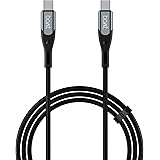Starting minoxidil for hair growth is a bit like starting therapy. You go in for resolution, but first you’re handed a list of daily commitments, possibly uncomfortable side effects and a haunting little truth: things may get worse before they get better.
Originally developed to treat high blood pressure, minoxidil’s unexpected benefit—hair growth—turned it into a dermatology staple. It’s one of the most effective topical treatments for androgenetic alopecia and early-stage hair thinning. But what no one tells you is how mundane, messy and mentally taxing the day-to-day can feel. Between the routine changes, the texture complaints, and the existential crisis of watching more hair fall out before it grows back, most people abandon it too early.
If you’re about to commit to the long game, consider this your pre-treatment pep talk. Here’s what to expect before your regrowth era begins:
It’s a daily act
Minoxidil doesn’t stay active for long. “It has a half-life of just three to four hours,” explains Dr Spoorthy Nagineni, consultant dermatologist at Zennara Clinics. That means if you skip a dose, you’re potentially undoing the progress you made the day before.
Daily application is non-negotiable per experts. It’s just another line on your already stretched to-do list, wedged between renewing your gym membership and remembering to buy eggs. Glamorous? No. Effective? Yes.
Grease will happen
Even the foam formats, which claim to absorb faster, leave behind some residue. “If your scalp is greasy enough for dry shampoo, it’s time for an actual wash,” says Dr Hina Mukadam of Luna Skin and Body Clinic.
Dry shampoo is a handy solution, but it can interfere with how minoxidil absorbs. If you’re committing to the product, you’re also committing to cleaner roots and a bit more shampoo.
You’ll shed before you grow
At around the four-week mark, you may find more hair on your pillow and in the shower drain. This is known as the shedding phase. “It’s your body pushing out weaker, miniaturised hairs to make room for stronger growth,” explains Dr Nagineni.
The process makes sense on paper. But in real life, it feels like your hair is turning against you. The trick is to not panic and give the treatment time to work. It’s unsettling, but temporary. Hold your nerve when it feels like you’re losing the plot (and your hairline).
It’s a long-term relationship
Minoxidil isn’t a one-time reset. “If you stop using it, you’ll lose whatever new hair you gained,” says Dr Nagineni. “Discontinuation often leads to shedding, which is why many hesitate to start,” adds Dr Chytra Anand, founder of Kosmoderma Healthcare.
Think of it as a long-term arrangement. You can take a break, but you should know the terms of disengagement. Experts say this is not to dissuade anyone using minoxidil but understanding the daily commitment, patience and long-term use it takes to see the results we’re chasing.
Your scalp may protest
Mild redness and flaking can be an onboarding symptom of starting minoxidil for hair growth. Mild irritation usually settles with some TLC in 2-3 weeks of use, but if it persists, it’s time to speak to your prescribing doctor. Powerful, gold-standard treatments, like tretinoin, may not be suitable for sensitive scalps. If your scalp is getting too dry and itchy, minoxidil is not your only option for stimulating hair growth.
Source link
Robustrion Case Cover for Lenovo Idea Tab Cover 11" with [Pencil Holder], Trifold Flip Cover Case for Lenovo Idea Tab Cover 11" [Auto Sleep Wake Support] - Black
₹599.00 (as of December 21, 2025 00:00 GMT +05:30 - More infoProduct prices and availability are accurate as of the date/time indicated and are subject to change. Any price and availability information displayed on [relevant Amazon Site(s), as applicable] at the time of purchase will apply to the purchase of this product.)OPPO K13x 5G 6000mAh and 45W SUPERVOOC Charger & AI (Breeze Blue, 128 GB) (6 GB RAM)
₹12,000.00 (as of December 21, 2025 00:00 GMT +05:30 - More infoProduct prices and availability are accurate as of the date/time indicated and are subject to change. Any price and availability information displayed on [relevant Amazon Site(s), as applicable] at the time of purchase will apply to the purchase of this product.)Samsung Galaxy M06 5G (Sage Green, 6GB RAM, 128 GB Storage) | MediaTek Dimensity 6300 | AnTuTu Score 422K+ | 12 5G Bands| 25W Fast Charging | 4 Gen of OS Upgrades | Without Charger
₹11,499.00 (as of December 21, 2025 00:00 GMT +05:30 - More infoProduct prices and availability are accurate as of the date/time indicated and are subject to change. Any price and availability information displayed on [relevant Amazon Site(s), as applicable] at the time of purchase will apply to the purchase of this product.)iPhone 17 256 GB: 15.93 cm (6.3″) Display with Promotion, A19 Chip, Center Stage Front Camera for Smarter Group Selfies, Improved Scratch Resistance, All-Day Battery Life; Mist Blue
Now retrieving the price.
(as of December 21, 2025 00:00 GMT +05:30 - More infoProduct prices and availability are accurate as of the date/time indicated and are subject to change. Any price and availability information displayed on [relevant Amazon Site(s), as applicable] at the time of purchase will apply to the purchase of this product.)










